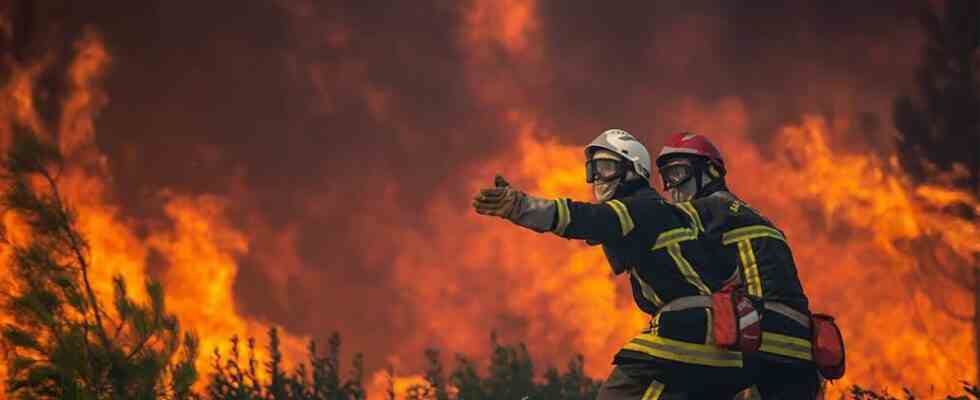Floods, droughts, heat waves, etc. The year 2022 has illustrated the ravages of climate change as well as the immense efforts that still have to be made to hopefully keep it under control, with important decisions to be made in the coming months. “The year 2022 will be among the hottest years on the globe, with all the phenomena that go with higher temperatures: extreme phenomena such as heat waves, intense rains, floods and drought, which accompany this climate change”, sums up Robert Vautard, director of the Pierre-Simon Laplace Institute, which specializes in climate science.
A series of extreme events has thus illustrated the acceleration of the catastrophic impacts of global warming, from the Sahel to the Horn of Africa, from Nigeria to Pakistan. In the latter country, nearly 33 million people have been affected by rains, floods and landslides. Europe, for its part, experienced its hottest summer on record, with giant forest fires, dry rivers and sluggish crops.
“Unfortunately, this is only the beginning”
“Unfortunately, this is only the beginning: we see in small what could happen to us in a big way”, warns Robert Vautard. And according to him, the heats of 2022 are all the more remarkable as the year is characterized by the persistence of the phenomenon called La Niña, which causes a cooling of part of the surface waters of the Pacific. When this phenomenon reverses, the world will likely climb a “new step” in warming.
On the political front, this damning observation served as a backdrop to the COP27 on the climate in November in Egypt, the results of which were mixed, leaving many points to be settled between now and the next edition in a year’s time. This major international conference approved the principle of creating a specific financial fund to compensate for the damage caused by climate change already suffered by the poorest countries, which must now be put on track. On the other hand, no new ambitions have been recorded for the reduction of greenhouse gas emissions and only around thirty countries have raised their ambitions this year.
“COP27 left us with a lot of work to do on mitigating” emissions, starting with the need to push “for the end of all fossil fuels – coal, oil and gas”, underlines Harjeet Singh, of the network international NGO Climate Action network (CAN), which pleads for financial aid from rich countries to the South to help it make its energy transition.
“Great stress”
COP28, to be held in Dubai a year from now, will be “the next vital step in raising ambitions on reducing greenhouse gases”, he insists. “At the COP we will talk a lot and at different times about this problem of the oil and gas sector and its possible financial contribution”, predicts Laurence Tubiana, one of the architects of the Paris agreement of 2015. A subject which promises “a great tension”, while the Emirates are one of the largest oil exporters in the world…
COP28 will also be an opportunity to publish a long-awaited global assessment to take stock of countries’ commitments to meet the objectives of the Paris Agreement, which aims to contain global warming well below 2°C and if possible at 1.5°C. A limit that seems difficult to reach, the current trajectories tending towards a much more pronounced warming.
But the climate will also be invited “to the spring and especially autumn meetings of the World Bank and the International Monetary Fund”, further indicates Laurence Tubiana. Because the last COP resulted in “a formal request to look at the international financial system and to review the role of international financial institutions”. Between these two meetings, Paris should also host a summit for “a new financial pact” with vulnerable countries, announced French President Emmanuel Macron, who wants to make common cause with Mia Mottley, Prime Minister of Barbados.

